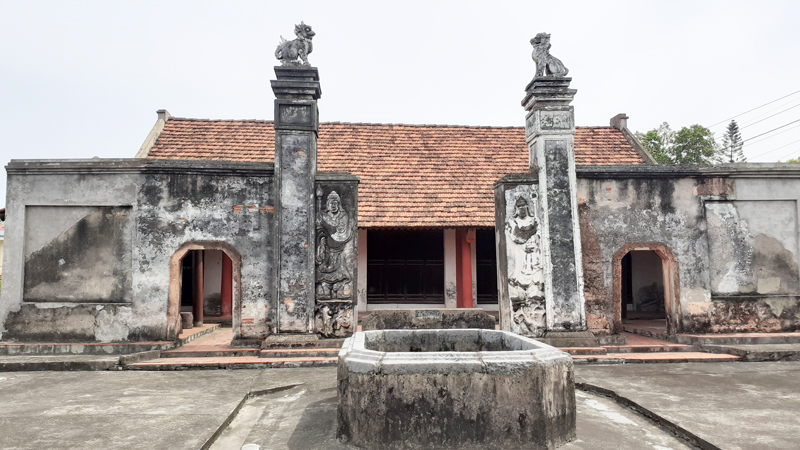Gieng Gia Temple (Ranked monument in 1998)
Gieng Gia Temple, Son Vi commune, worships Dai Hai Cong, a legendary historical figure during the period when the Hung Kings built the country. In front of the door of Gieng Gia temple, there is an ancient "Heavenly created" well with clear blue water all year round, elaborately built with an octagonal well made of green stone slabs, a laterite embankment in the well, and a wooden bottom. lim. The gate of Gieng Gia temple has an arched style, with a pillar at the top decorated with the image of Nghe chau, and on both sides of the gate are reliefs of martial artists.

Gieng Gia Temple was built around the end of the 17th century, facing Southeast, with Nhi style architecture, including 2 buildings: Pre-Saint and Rear Palace. Currently, Gieng Gia Temple only has a 5-compartment harem building, a 2-roof house with gable walls, from a distance it looks like an upside-down boat, two curved tiled roofs sunk in the middle, the two ends are raised by two ends. bent pliers. The wooden structure frame has 5 rows of pillars, the roof rafters are in the style of "Gongs are high, beams are stacked - beams are lower", columns - beams - are linked together to form a sturdy frame, and the roof is covered with modern-day tiles. On the riverbank, the banks are lined with numbers. The 3 middle compartments are built with separate walls to create a solemn and discreet palace where the gods reside, and the ceiling is paneled with ironwood. In particular, Gieng Gia Temple uses traditional techniques to combine materials to create the ancient temple, which are: cardboard bricks, lime, lime, and salt. Regarding the architectural decorative art at Gieng Gia Temple, it is mainly expressed by embossed techniques on the stripes and horizontal sandals with motifs of swords and rattan clusters.
Along with ancient architecture, Gieng Gia Temple currently preserves a rich system of antiques, typically: Antiquities of paper materials (jade genealogy, 14 ordinations worshiped together with Do Nghia communal house); Wooden material (The altar has a statue of Dai Hai Cong, a palanquin with bowls of tribute, a halberd, etc.); Copper material (incense burners, gongs, floating candles); stone material (stone stele "Frame of lower horse"). Festivals at Gieng Gia Temple: January 7, Saint's birthday, ceremony using black pigs, wine, and sticky rice; The 10th day of the seventh lunar month is the summer festival, where black pigs, wine, and sticky rice are used; August 15 is a day of sanctification, a ceremony using tam Sinh, wine, and sticky rice; August 16th is the international day, the ceremony of using Tam Sinh and October 10th is the day of carving wood statues, the ceremony of using black pigs, wine, and sticky rice.
(Collection source: Proceedings of the Historical and Cultural Relics of Typical Traditional Festival of Lam Thao district in 2019)